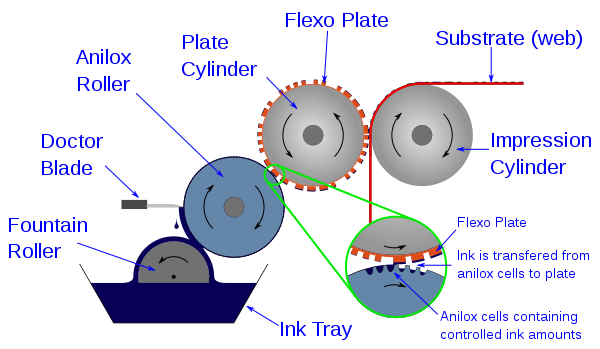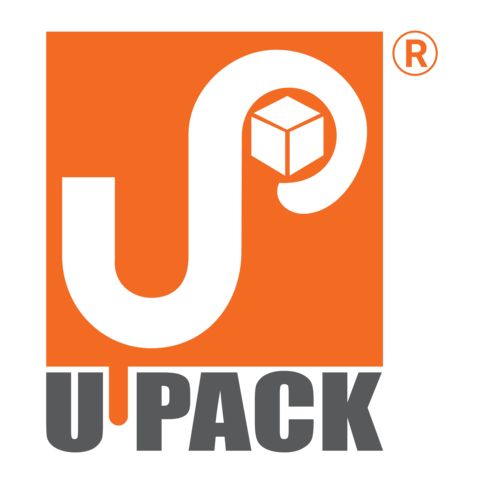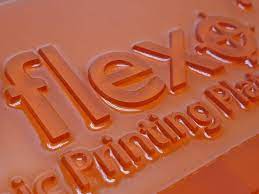Revolutionizing Packaging: The Cutting-Edge World of Flexo Printing
Flexo Printing Insights: Shaping the Next Generation of Packaging
Flexogrpahy is a widely used printing technique in the packaging industry that offers numerous advantages in terms of versatility, cost-effectiveness, and quality. It is a form of relief printing, where the image to be printed is raised on a flexible printing plate. This plate is then inked and pressed onto the printing substrate, transferring the image onto the surface.

The term "Flexo" is derived from the word "flexible," which refers to the flexible nature of the printing plate used in this process. Unlike other printing methods, such as offset or gravure printing, Flexo print utilizes a flexible plate made of rubber or photopolymer material. This flexibility allows the plate to conform to the shape of the printing substrate, enabling it to print on various surfaces, including paper, cardboard, plastic, metal, and even textiles.
One of the key advantages of Flexo print is its ability to produce high-quality prints with excellent colour reproduction. The flexible printing plate allows for precise ink transfer, resulting in sharp and vibrant images. Additionally, the use of liquid inks in Flexo printing allows for a wide range of colours and special effects, such as metallic or fluorescent inks, to be easily incorporated into the print.
Flexo print is also known for its fast production speeds, making it ideal for large-scale printing projects. The printing process itself is relatively simple and efficient, with the printing plate rotating on a cylinder and the substrate passing through the printing unit. This continuous printing method allows for high-volume production, making Flexo print a popular choice for packaging materials, labels, and newspapers.
Another advantage of Flexo print is its cost-effectiveness. The flexible printing plates used in this process are relatively inexpensive compared to other types of printing plates, such as those used in offset printing. Additionally, the use of liquid inks in Flexo print reduces ink waste, as the excess ink can be easily recycled. This not only helps to reduce costs but also makes Flexo print a more environmentally friendly printing option.
Flexo print also offers great versatility in terms of the types of substrates it can print on. Its ability to print on various surfaces, including non-porous materials like plastic or metal, makes it suitable for a wide range of applications. From food packaging to labels on household products, Flexo print can be used to create visually appealing and informative prints on almost any type of material.
INTRODUCTION
Flexographic printing is a widely used printing technique that is commonly employed in the packaging industry. It is a versatile and cost-effective method for printing on various substrates such as paper, cardboard, plastic, and metal. To achieve high-quality prints, a specialized machine called a Flexo print machine is used. In this article, we will explore the various components and working principles of a Flexo print machine, as well as its advantages and applications.
COMPONENTS OF A FLEXO PRINT MACHINE
A Flexo print machine consists of several key components that work together to produce high-quality prints. These components include:
Anilox Roller:
The anilox roller is responsible for transferring ink from the ink fountain to the printing plate. It is engraved with tiny cells that hold a specific volume of ink, which is then transferred to the plate during the printing process.
Printing Plate:
The printing plate is a flexible material, usually made of rubber or photopolymer, that carries the image to be printed. It is mounted on a plate cylinder and comes into contact with the substrate to transfer the ink.
Plate Cylinder:
The plate cylinder holds the printing plate and rotates to bring the plate in contact with the substrate. It is driven by a motor and can be easily changed to accommodate different printing plates.
Impression Cylinder:
The impression cylinder applies pressure to the substrate, ensuring proper ink transfer from the printing plate. It is typically covered with a rubber blanket to provide a smooth and even contact with the substrate.
Ink Fountain:
The ink fountain holds the ink and supplies it to the anilox roller. It is equipped with a series of adjustable ink keys that control the amount of ink transferred to the anilox roller, allowing for precise ink distribution.
Drying System:
After the ink is transferred to the substrate, it needs to be dried quickly to prevent smudging and ensure proper adhesion. A drying system, usually consisting of hot air or UV lamps, is employed to evaporate the solvents in the ink and cure it.

WORKING PRINCIPLES OF A FLEXO PRINT MACHINE
Flexographic printing, also known as Flexo printing, is a popular method used in the packaging industry to print high-quality images and text on various substrates such as paper, cardboard, plastic, and metal. This printing technique is widely used for producing labels, flexible packaging, corrugated boxes, and other types of packaging materials.
The working principles of a Flexo print machine involve several key components and processes that work together to achieve the desired print quality. In this article, we will explore these principles in a semitechnical manner, providing a comprehensive understanding of how a Flexo print machine operates.
Plate Making:
The first step in the Flexo printing process is plate making. Flexo plates are typically made of a flexible photopolymer material that can be easily mounted on the printing cylinder. The plate-making process involves exposing the photopolymer material to UV light through a film negative, which creates the desired image on the plate. The plate is then washed to remove any unexposed material, leaving behind a relief image that will transfer the ink onto the substrate.
Ink Delivery System:
The ink delivery system is a crucial component of a Flexo print machine. It consists of an ink fountain, an anilox roller, and a doctor blade. The ink fountain holds the ink and supplies it to the anilox roller, which is a cylinder with tiny cells engraved on its surface. The doctor blade scrapes off excess ink from the surface of the anilox roller, ensuring a consistent and controlled ink transfer to the printing plate.
Printing Cylinder:
The printing cylinder is responsible for transferring the ink from the plate to the substrate. It is typically made of metal or rubber and is mounted on the print machine. The printing cylinder rotates at a high speed, allowing the inked plate to come into contact with the substrate and transfer the image or text.
Substrate Handling:
The substrate handling system in a Flexo print machine is designed to feed the substrate into the printing area and ensure precise registration. The substrate is usually fed from a roll and passes through various rollers, including tension control rollers, guide rollers, and impression rollers, to maintain proper tension and alignment during the printing process.
Drying and Curing:
After the ink is transferred to the substrate, it needs to be dried or cured to ensure proper adhesion and durability. Different drying or curing methods can be used depending on the type of ink and substrate.

The Benefits of Flexo Printing: A Semitechnical Perspective
Introduction:
Flexo printing, also known as flexographic printing, is a widely used printing technique that offers numerous benefits for various industries. This semitechnical article aims to explore the advantages of Flexo printing, shedding light on its applications, process, and key features.
Understanding Flexo Printing:
Flexo printing is a form of relief printing that utilizes flexible relief plates to transfer ink onto a substrate. It is commonly used for printing on various materials such as paper, cardboard, plastic, and even metallic films. The process involves the use of a rotating cylinder, known as an anilox roller, which transfers ink to the printing plate. The plate then transfers the ink onto the substrate, resulting in a high-quality print.

Benefits of Flexo Printing:
Versatility:
One of the major advantages of Flexo printing is its versatility. It can be used to print on a wide range of materials, making it suitable for various industries. Whether it's packaging, labels, or even newspapers, Flexo printing can deliver excellent results on different substrates. This versatility allows businesses to streamline their printing processes and cater to diverse customer needs.
Cost-effectiveness:
Flexo printing offers cost-effective solutions for large-scale printing projects. The process allows for high-speed production, making it ideal for high-volume orders. Additionally, Flexo printing plates are relatively inexpensive compared to other printing methods, reducing overall production costs. This cost-effectiveness makes Flexo printing an attractive option for businesses looking to optimize their printing budgets without compromising on quality.
High-quality results:
Despite its cost-effectiveness, Flexo printing does not compromise on print quality. The use of flexible relief plates allows for precise ink transfer, resulting in sharp and vibrant prints. The process also enables the use of a wide range of inks, including water-based, solvent-based, and UV-curable inks, further enhancing the print quality. Whether it's intricate designs, fine text, or vibrant colours, Flexo printing can deliver exceptional results.
Speed and efficiency:
Flexo printing is known for its high-speed production capabilities. The process allows for rapid printing, making it suitable for time-sensitive projects. The use of anilox rollers ensures consistent ink transfer, minimizing downtime and increasing overall efficiency. This speed and efficiency make Flexo printing an excellent choice for businesses that require quick turnaround times without compromising on quality.
FLEXO PRINTING IS SUITABLE FOR
applications. With its ability to print on various substrates and produce high-quality results, Flexo printing has become a popular choice for many industries.
One of the key advantages of Flexo printing is its ability to print on different types of materials. Whether it is paper, plastic, or even metal, Flexo printing can handle a variety of substrates with ease. This makes it an ideal choice for industries such as packaging, labelling, and even textile printing.
Flexo printing also offers excellent print quality. The use of flexible printing plates allows for precise and detailed printing, resulting in sharp and vibrant images. This is particularly important for industries that require high-quality graphics, such as the food and beverage industry, where product packaging plays a crucial role in attracting consumers.
Another benefit of Flexo printing is its ability to handle large print runs efficiently. The use of rotary printing presses allows for high-speed production, making it suitable for industries that require large quantities of printed materials. This is especially advantageous for packaging companies that need to produce large volumes of labels or boxes.
Flexo printing is also known for its cost-effectiveness. The use of water-based inks and the ability to print on a wide range of substrates help reduce production costs. Additionally, the high-speed production capabilities of Flexo printing allow for faster turnaround times, which can result in cost savings for businesses.
In recent years, Flexo printing has also made significant advancements in terms of sustainability. The use of water-based inks and the ability to print on recyclable materials make Flexo printing a more environmentally friendly option compared to other printing methods. This is particularly important for industries that are increasingly focused on reducing their carbon footprint and adopting sustainable practices.
Flexo printing also offers versatility in terms of the types of products it can produce. From labels and packaging to newspapers and magazines, Flexo printing can handle a wide range of applications. This versatility makes it a popular choice for businesses that require diverse printing capabilities.
While Flexo printing offers many advantages, it is important to note that it does have some limitations. For instance, it may not be suitable for printing extremely fine details or complex designs. In such cases, other printing methods such as offset or digital printing may be more appropriate.
In conclusion, Flexo printing is a versatile and efficient printing method that is suitable for a wide range of applications. Its ability to print on various substrates.
The Versatility and Advantages of Flexo Printing
Flexo printing, also known as flexographic printing, is a widely used printing technique that offers numerous benefits and applications across various industries. This semitechnical content aims to explore the uses of Flexo print, highlighting its versatility and advantages.
Flexo printing is a form of relief printing that utilizes flexible relief plates made of rubber or photopolymer materials. These plates are mounted on rotating cylinders, which transfer ink onto the printing substrate. This process allows for high-speed printing on a wide range of materials, including paper, cardboard, plastic films, and even non-porous surfaces like metal and glass.
One of the primary uses of Flexo print is in the packaging industry. Flexo printing is ideal for producing high-quality, vibrant, and durable packaging materials. It is commonly used for printing labels, tags, flexible packaging, corrugated boxes, and folding cartons. The ability to print on various substrates makes Flexo printing a versatile choice for packaging manufacturers.
Flexo print also finds extensive applications in the label industry. Labels play a crucial role in product identification, branding, and information dissemination. Flexo printing allows for the production of labels with sharp graphics, vibrant colours, and excellent print quality. It is commonly used for printing product labels, barcode labels, security labels, and promotional stickers.
Another significant use of Flexo print is in the production of flexible packaging materials. Flexible packaging, such as pouches, sachets, and bags, is widely used in the food, beverage, and pharmaceutical industries. Flexo printing enables the printing of high-resolution images, text, and barcodes on flexible packaging materials, ensuring product information and branding are effectively communicated to consumers.
The advantages of Flexo printing are numerous, making it a preferred choice for many printing applications. One of the key advantages is its ability to print on a wide range of substrates. Flexo printing can handle both porous and non-porous materials, allowing for printing on various surfaces. This versatility makes it suitable for printing on different packaging materials, including paper, plastic, and metal.
Flexo printing also offers excellent print quality. The use of flexible relief plates allows for precise ink transfer, resulting in sharp and vibrant images. The ability to control ink viscosity and adjust printing parameters ensures consistent and high-quality prints. Additionally, Flexo printing can achieve high-resolution graphics and fine details, making it suitable for intricate designs and small text.


